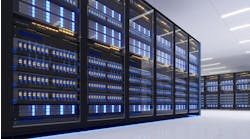Akamai Bets on Bringing Cloud In Closer with 5 New Data Center Sites
As companies repatriate workloads from the cloud and build hybrid networks to take advantage of compute and storage resources wherever they reside, Akamai continues to build out their edge network that enables low-latency cloud deployments and high-performance distributed networking.
When you look at the current leaders in the hyperscale data center market, you see a focus on huge facilities that concentrate workloads in a relatively small number of physical locations. Akamai, who believe they should be a big part of the cloud provider conversation, has taken the distributed approach, with over 4200 locations in 134 countries that started with their established CDN deployment.
Along with the opening of five new data centers, first in Paris, Washington, D.C., and Chicago, with locations in Seattle and Chennai, India opening later this quarter, Akamai believes its novel, distributed infrastructure will change the approach that customers take to using a cloud infrastructure.
According to Adam Karon, chief operating officer and general manager, Cloud Technology Group, Akamai Technologies, “Distributed workloads require distributed infrastructure. Legacy, centralized cloud architecture was not designed for the demands of developers and companies challenged with delivering better user experiences that increasingly require putting applications and data closer to the customer.”
This is a statement which, in many ways, describes the reasoning behind the development of edge data centers in a nutshell.
New facilities and expanded services
Akamai is also announcing new service capabilities to its customers, including a doubling of their object storage capacity to one petabyte and a billion objects per storage bucket. With the seemingly exponential growth in user demand for data and storage capacity, this increase will be welcomed by customers.
Along with greater storage, the company is now also offering premium instances which will allow businesses to optimize their spend, selecting solutions that deliver consistent performance, predictable resource and budget allocation, and simpler SKU management for larger commercial workloads.
Choosing this option guarantees that the workloads are placed on the best performing processor and hardware combinations for the workloads.
These new sites and capabilities are part of the Akamai Connected cloud solution, which is their distributed cloud and edge platform that goes beyond their CDN roots to include cloud computing and security, productizing Akamai’s 25 years of experience in building out internet capabilities for major corporations.
The latest announcements include integration with their recent acquisition of Linode. The Akamai Global Load Balancer combines the functionality of Linode NodeBalancers for local traffic load balancing, with existing Akamai Global Traffic Manager and Application Load Balancer services. Akamai states that the integration of the combined capabilities is a fundamental component of their connected cloud vision.
In many ways, it seems that Akamai is ahead of the curve in deploying a comprehensive edge networking capability. The question seems to be: will their smaller, more flexible approach to cloud computing meet the needs of an industry that currently seems obsessed with meeting the demands of an AI-driven infrastructure?








